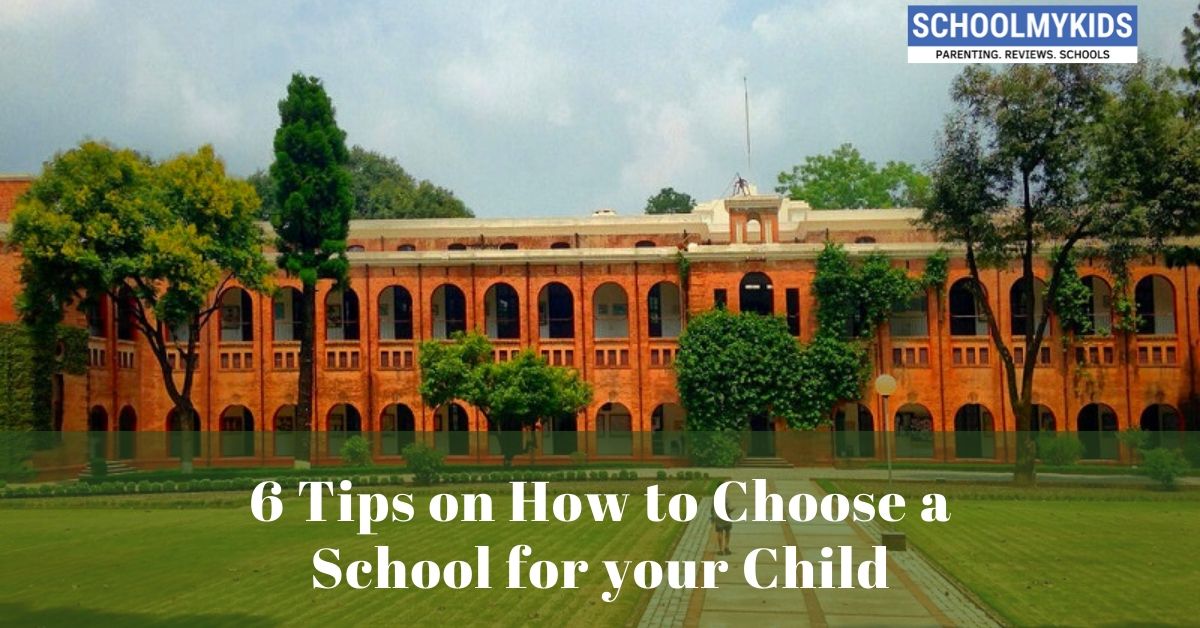Choosing a school in India can be a stressful decision for parents. And it should be, in that we want the best for our kids. One piece of advice is to make a plan before you begin your research and start visiting schools. Writing down a list of your concerns, questions, and expectations will help you save time, be more prepared, and put yourself at ease when it’s time to make a decision. Consider adding any of the tips below that resonate with you as you put together your plan.
Our Story
We moved to New Delhi in the summer of 2017 and visited several preschools before settling on a Montessori School. Soon after our daughter enrolled, we began asking around and collecting information on primary schools in South Delhi. We understand first-hand how difficult and gut-wrenching this process can be. My hope is that our experience, and the tips we learned can help you put together a plan.
How SchoolMyKids can help
Once you’ve put together a plan, a great place to start your research is www.SchoolMyKids.com, where you can find a wide range of useful information including how to find a quality school, parenting tips and advice, health and nutrition information for kids, genuine ratings and reviews, educational and development activities, even help in choosing a name for your baby!
SchoolMyKids has a robust database of schools and information to help you get started.
The database currently covers schools in India, UAE, Bahrain, Kuwait, Malaysia, Maldives, Nepal, Nigeria, Qatar, Singapore, Thailand, and the Australia. Information about each school includes basic information like grade levels, the curriculum used, gender, and address, and contact information. In addition, the site includes admission details, fee structure, a description of the infrastructure and facilities, extracurricular activities, academic programs, and exam results.
Tips on How to Select a Good School for Your Kid
Tip #1 What Are Your Kid’s Needs?
This is an excellent place to start, even before you start your research. Think through what does your kid specifically need in a school to help them thrive? Here are a few areas to consider to help you get started:
- Does your kid need an English as a Second Language or other language class?
- Does your kid have any special learning needs?
- Does your kid work better in a structured or unstructured environment? Does your kid respond better to an environment that supports creativity?
- Is your kid a vegetarian or have special dietary needs?
- Does your kid like to work alone or in a group?
- Is your kid more inclined to the arts like music, art, creative writing, or more inclined to the sciences, mathematics, logic?
Of course, our kids may not show a tendency to one or the other of these options. For example, our six-year-old daughter can work equally well alone or in a group. But, if given a choice, she might prefer a school that has a focus on the arts because of her love of music, dance, and art. Make this a running list so you can add to it as you make your plan and begin to visit schools.
Tip #2 Make a List of What is Important to You
Before considering what other parents, family members, and bloggers believe is important when looking for a school, make your own list. As we saw in Tip #1, you know your kid better than anyone. After you’ve completed all your research and narrowed down the options, you’re usually left with your gut feeling to help you make a final choice. So, take some time and think through early in the process what’s important to you and your kid. While it’s ok for your list to grow as you do research, see where you are before you begin the process of putting a plan together.
Tip #3 Location of the School
This tip will help you quickly narrow down your options. Unless you’re willing to move, decide how long you’re willing to have your kid travel to and from school. Consider the time of day and traffic that will be involved. Also, consider when you will need to pick up your kid because of extracurricular activities. We decided twenty minutes, one-way, was the maximum amount of time we were willing to travel before choosing the school we did. Twenty minutes one-way, twice a day is forty minutes, multiplied by 5 days a week, equals 3 and ½ hours a week our daughter spends in the car commuting to school. We did a lot of math like this to help us decide. This was an essential consideration for us.
Tip #4 Consider the Cost
Another tip that will help you quickly narrow your list of schools is your budget. Some schools will likely be out of your price range. Based on our experience, don’t fall into the thinking that because you find a cheaper tuition rate, the education is inferior, or it’s a worse fit for your kid. We definitely found that the more expensive schools did not always reflect the quality of education or the fit of the school for our kid.
Tip #5 Research the Schools
Now that you have identified your kid’s needs, defined what you are looking for in a school, calculated how far you’re willing to travel, and agreed on a budget, you’re ready to create your shortlist of schools. Here are a few options to consider when researching schools:
- SchoolMyKids
SchoolMyKids is one of the largest school discovery and rating platform. more information see the description above
- Internet Research
I would first start with the school’s website. Check out the school’s mission and vision statement, as sometimes questions of fit can be answered here. Usually, questions about curriculum, tuition and fee costs, extracurricular activities, safety and security, and food options will be listed here. Also, check out reviews of the school by parents, former teachers and staff, and other resources that specialize in school reviews. The school’s parent-teacher association, if there is one, is another excellent place to get an honest look at the school and how you might get involved.
- Ask Around
Engage friends and family and ask for introductions to parents and former and current students of the school to have a chat and learn more about their experience. This is where you’ll also get more of an honest assessment of the school.
Tip #6 Visit the Schools
Now that you’ve thoroughly researched your shortlist, you may be able to further shorten your list based on what you’ve learned. Before you schedule your visits, your last step is to organize your questions and create a checklist to make sure you don’t forget any piece of information. The last thing you need is to be unnecessarily discouraged because you forgot to ask if lunch would be provided. I would definitely review tips 1 and 2 as you put your checklist together.
When it comes to your school visit, some schools may have a designated day for these visits. While we were ok with a guided group tour, it was important for us to be on a tour while school was in session. We also wanted to talk to teachers, the principal, and support staff is possible.
Here are a few questions to consider as you put the finishing touches on your plan:
- What is the school’s approach to learning? How does the approach relate to the mission and vision of the school?
- Based on your kid’s needs and your expectations, what specifically do you need to know?
- What is the school’s behavior policy? How is discipline managed?
- How do kids get to school? Does the school have a bus pickup and dropoff service?
- How does the school ensure the safety and security of its students? Are there cameras, and if so, how are they monitored? Is there GPS on the school bus? ID cards for parents and caregivers?
- Air quality!
- What is the average school to teacher ratio? In India, many classes have support staff. How many support staff are there in each class?
- How are kids who need individual learning modifications addressed? Are the classrooms inclusive?
- How much homework is given? For younger students, are there opportunities for free play?
- What are the school grounds like? How is the school’s infrastructure? When it comes to the classroom, is it well lit, is work displayed, how are the seats arranged? If they are in straight lines and rows, this could tell you the school is more of a traditional individual, rote memory approach. Seats arranged in groups demonstrate more of a collaborative approach to learning.
- Ask to visit the cafeteria? Where is the food prepared? What kind of food options are there?
- How can parents participate in the school? Is there a vibrant parent-teacher association?
Create a Shared Spreadsheet If you haven’t been through this process yet, as you can see, there are many considerations and variables to consider as you make your choice. It should go without saying to start early! My wife is the Queen of Spreadsheets, and organizing all of these questions and considerations helped both of us stay organized. And honestly, it helped her save time and patience by answering most of my questions with, “It’s on the spreadsheet.” Once you work yourself through these tips, a few choices will rise to the top, and often the best option will present itself. And even if you end up relying on your gut, your previous research can help assure you’re still making an informed choice. Most of all, if you have a partner, take turns reminding each other to relax. You can always change schools if the first choice doesn’t work out.









Be the first one to comment on this story.